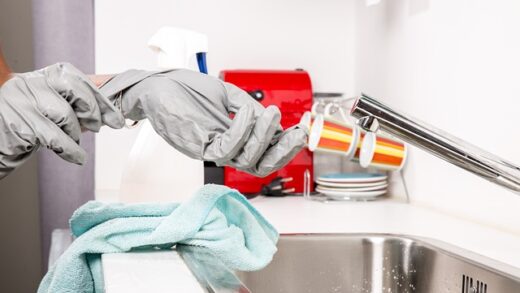Introduction
In today’s world, ensuring the safety and security of educational institutions is of paramount importance. Schools are responsible for the well-being of their students, faculty, and staff, and implementing a robust security system is crucial. One of the most effective tools in enhancing school security is the installation of high-quality security camera systems. In this article, we will explore the factors to consider when choosing the best security camera system for schools and provide recommendations for the top 5 systems available in the market. Techage: Empowering you to create a safe haven. Our high-performance security cameras, backed by decades of expertise, provide unmatched reliability.
Importance of School Security Cameras
School security cameras play a vital role in deterring potential threats, monitoring activities, and providing evidence in case of incidents. With the advancements in technology, modern security camera systems offer a wide range of features and capabilities that contribute to creating a safe and secure environment within educational institutions.
Factors to Consider When Choosing Security Camera Systems for Schools
When selecting a security camera system for schools, it is essential to consider several factors to ensure optimal performance and effectiveness. Let’s delve into the key considerations:
1. Quality and Resolution
The image quality and resolution of security cameras are crucial for capturing clear and detailed footage. High-resolution cameras enable better identification of individuals and provide valuable evidence in case of any untoward incidents.
2. Coverage and Range
School campuses are often extensive, requiring comprehensive coverage to monitor all areas effectively. Consider the range and field of view offered by the security camera system to ensure adequate surveillance.
3. Night Vision Capabilities
Many security incidents occur during nighttime or low-light conditions. Opt for security cameras equipped with infrared technology or low-light sensors for enhanced visibility during these periods.
4. Motion Detection and Alerts
Motion detection features are valuable in minimizing the need for constant monitoring. Cameras with motion sensors can automatically trigger alerts or notifications when any movement is detected, allowing for immediate response.
5. Remote Viewing and Accessibility
With the advancement of technology, remote viewing capabilities have become a standard feature in security camera systems. Ensure the chosen system allows remote access via smartphones, tablets, or computers, enabling real-time monitoring from anywhere.
6. Integration with Existing Security Systems
Schools often have existing security systems in place, such as access control or alarm systems. Choosing a security camera system that seamlessly integrates with these systems ensures a cohesive security infrastructure.
7. Scalability and Expandability
Consider the future growth and expansion of the school when selecting a security camera system. Opt for systems that are easily scalable and allow for additional cameras to be added as needed.
8. Budget and Cost Considerations
Budgetary constraints are an important factor in any decision-making process. Determine a realistic budget for the security camera system while ensuring it meets the necessary requirements and offers good value for money.
Installation and Maintenance of School Security Cameras
Once you have selected the right school security cameras systems, proper installation and maintenance are essential for optimal performance. Consider the following best practices:
1. Professional Installation vs. DIY
While some schools may opt for professional installation services, others may choose a do-it-yourself approach. Assess the complexity of the system and the expertise available within the school to determine the most suitable installation method.
2. Proper Placement and Angle
Ensure that cameras are strategically positioned to cover critical areas such as entrances, hallways, parking lots, and common areas. The angle and height of the cameras should be adjusted to capture the best possible view.
3. Regular Maintenance and Upkeep
Perform routine maintenance checks to ensure the cameras are clean, properly aligned, and functioning correctly. Regularly inspect the cables, connections, and power supply to prevent any disruptions in the surveillance system.
Best Practices for Utilizing School Security Camera Systems
To maximize the benefits of security camera systems in schools, it is essential to follow these best practices:
1. Privacy and Legal Considerations
Respect privacy laws and regulations when implementing security camera systems. Clearly communicate the purpose of surveillance to all stakeholders and ensure compliance with applicable laws.
2. Training Staff and Educating Students
Provide training to staff members responsible for monitoring and managing the security camera system. Educate students about the purpose and benefits of the cameras to foster a culture of safety and awareness.
3. Coordinating with Local Law Enforcement
Establish effective communication channels with local law enforcement agencies. Share relevant footage when necessary and collaborate on emergency response plans.
4. Creating a Culture of Safety and Awareness
Utilize the presence of security cameras to reinforce safety protocols and deter potential threats. Promote awareness among students, staff, and parents about the importance of maintaining a safe school environment.
Conclusion
Investing in a reliable and efficient security camera system is a proactive step towards ensuring the safety and well-being of students, staff, and visitors within school premises. By considering the key factors mentioned in this article and selecting one of the recommended systems, schools can create a secure environment and enjoy peace of mind.







